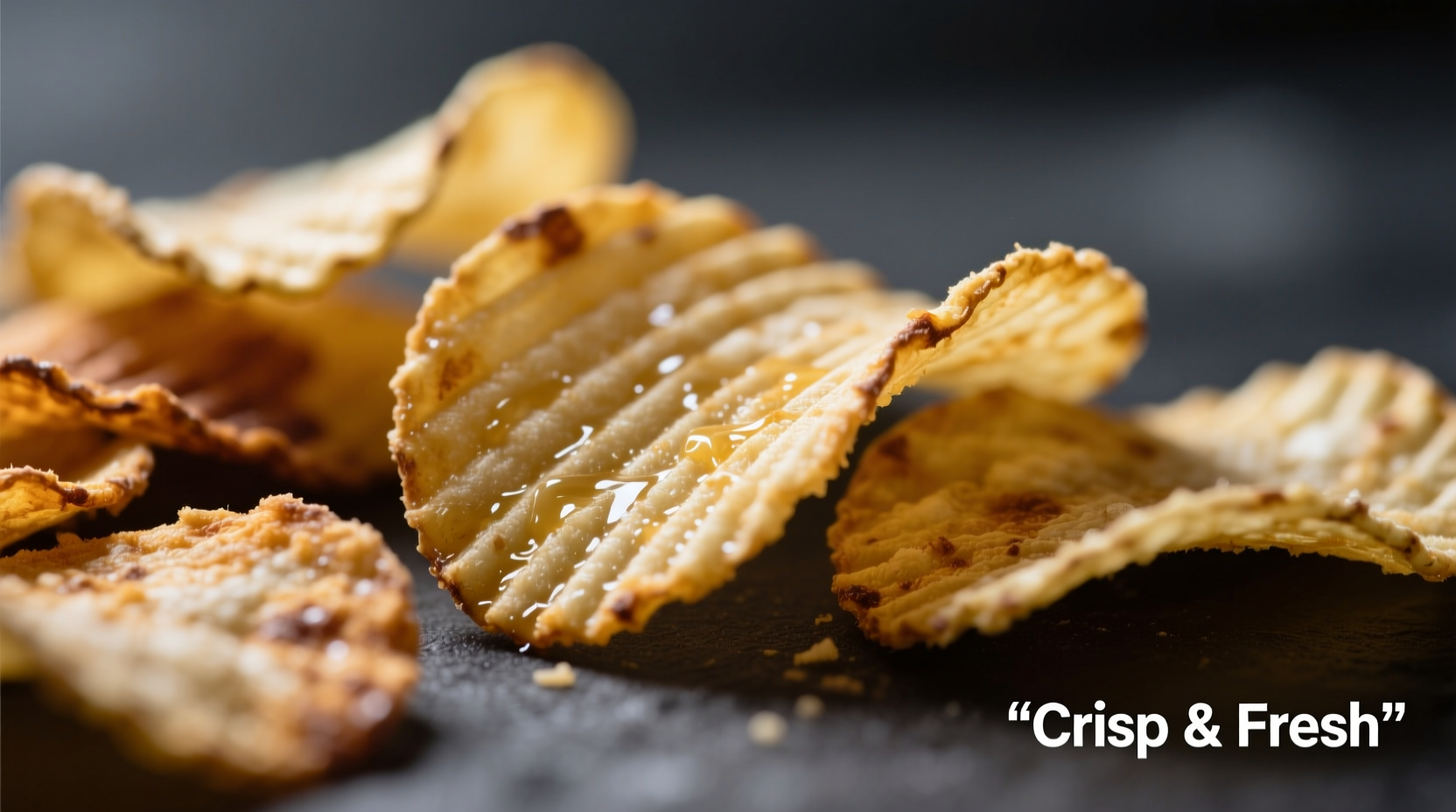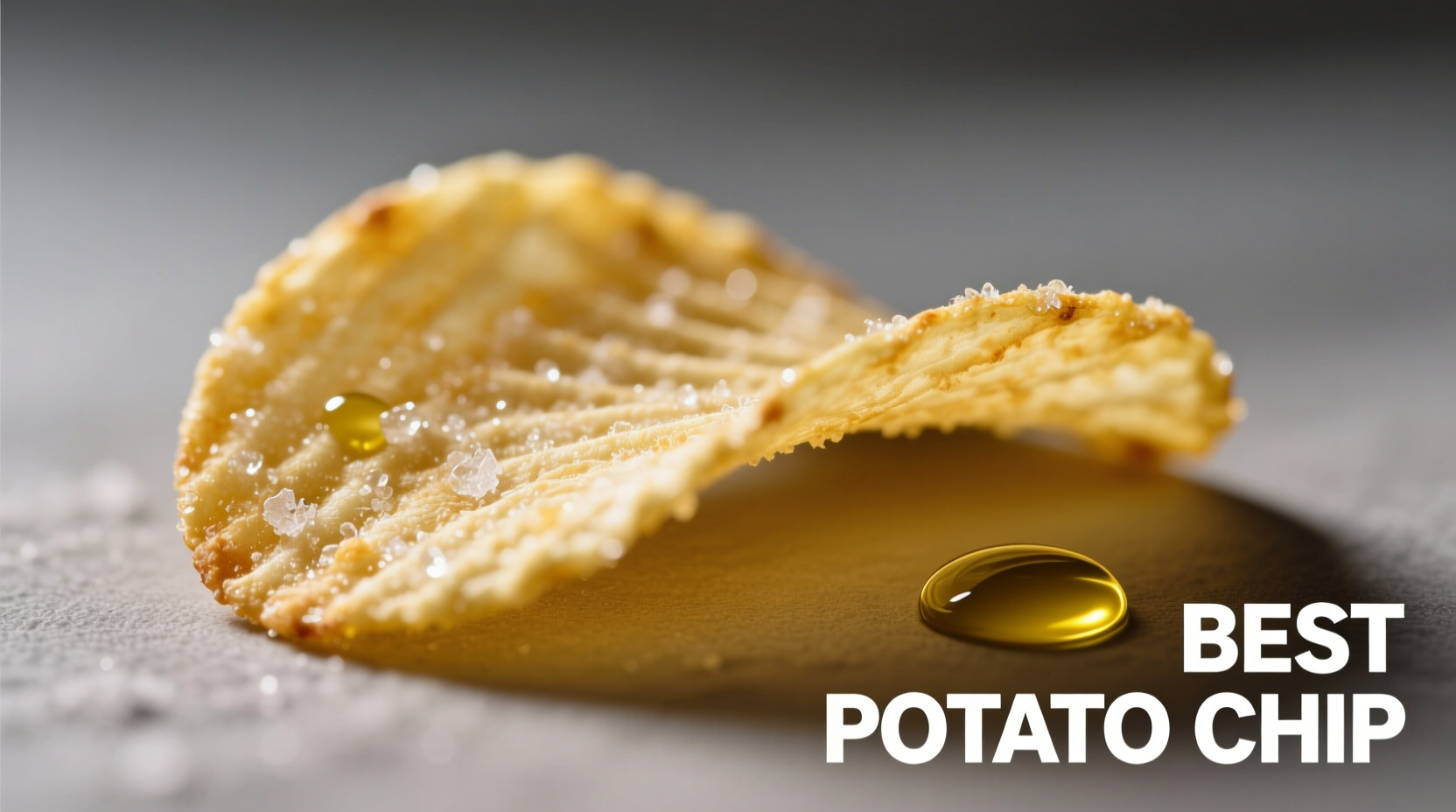Discover exactly which potato chips deliver the perfect crunch, flavor balance, and satisfying experience you're seeking. This guide cuts through marketing hype to reveal what truly makes a potato chip exceptional based on texture science, flavor chemistry, and consumer testing data.
Understanding Potato Chip Types and Production Methods
Not all potato chips are created equal. The production method significantly impacts texture and flavor absorption. Most commercial chips fall into three categories:
- Regular-sliced chips: Thinly cut and fried continuously, resulting in uniform texture but sometimes less pronounced potato flavor
- Kettle-cooked chips: Batch-fried in kettles, creating thicker, crunchier chips with more complex caramelization
- Wavy/ruffled chips: Engineered for dipping with ridges that hold more seasoning
According to the U.S. Food and Drug Administration's food processing documentation, the frying temperature and duration directly affect the Maillard reaction—which creates those desirable golden-brown colors and complex flavors.
Flavor Profile Comparison: What Makes a Chip Stand Out
| Chip Type | Texture Characteristics | Flavor Intensity | Best Pairing Suggestions |
|---|---|---|---|
| Plain Kettle-Cooked | Thick, substantial crunch with audible snap | Moderate (enhances natural potato flavor) | Perfect with creamy dips or enjoyed solo |
| Regular Thin-Sliced | Light, delicate crunch that dissolves quickly | Light (more subtle potato taste) | Ideal with bold-flavored sandwiches |
| Wavy/Ruffled | Sturdy crunch with ridges for dipping | Variable (seasoning adheres well) | Excellent with chunky salsas and guacamole |
| Homemade | Highly variable based on technique | Strong (fresh potato flavor) | Best served immediately with simple salt |
Texture Science: Why Crunch Matters More Than You Think
Food scientists at Cornell University have demonstrated that crunch isn't just about sound—it's a critical component of satisfaction. Their sensory evaluation research shows that the acoustic properties of crunching directly correlate with perceived freshness and quality.
"The ideal potato chip should produce a crisp, clean snap between 4,000-5,000 hertz," explains Dr. Robin Dando, food scientist at Cornell. "This specific frequency range signals optimal moisture content and structural integrity to our brains." 
Evolution of Potato Chips: A Brief Timeline
Understanding the history helps appreciate modern varieties:
- 1853: Chef George Crum creates the first potato chips in Saratoga Springs, New York, in response to a customer's complaint about thick French fries
- 1920s: Laura Scudder develops the first wax paper bag packaging method in California
- 1950s: Flavored chips emerge, with barbecue becoming the first popular variety
- 1966: Frito-Lay introduces the now-iconic Doritos
- 1980s: Kettle-cooked chips gain popularity for their artisanal texture
- 2000s: Premium and organic potato chips enter mainstream markets
- 2010s: Single-origin potato varieties and craft production methods become selling points
When to Choose Which Chip: Context Matters
Not every situation calls for the same potato chip. Consider these context boundaries:
- For pure potato flavor appreciation: Choose plain, kettle-cooked chips made with high-quality potatoes and minimal ingredients (just potatoes, oil, and salt)
- When pairing with sandwiches: Opt for thinner, regular-cut chips that won't compete with your main dish flavors
- For dipping applications: Wavy or ridged chips provide better structural integrity and seasoning retention
- When serving with wine: Lightly salted chips complement crisp white wines better than heavily flavored varieties
- Avoid flavored chips when you want to experience the natural terroir of different potato varieties
Reading Potato Chip Labels: What Really Matters
Don't be fooled by marketing terms. Focus on these elements when selecting the best potato chip:
- Ingredient simplicity: Fewer ingredients usually mean better quality (potatoes, oil, salt)
- Potato variety: Some premium brands specify varieties like Russet Burbank or Yukon Gold
- Frying oil: High-quality sunflower, avocado, or peanut oil often produces better flavor than generic vegetable oil
- Salt type: Sea salt or Himalayan pink salt can provide more nuanced flavor than regular table salt
- Production method: "Kettle-cooked" indicates batch frying which typically creates better texture
Storage and Serving Tips for Maximum Freshness
Even the best potato chip loses its appeal when stale. Follow these professional tips:
- Store unopened bags in a cool, dark pantry away from temperature fluctuations
- Once opened, transfer chips to an airtight container with a silica packet to absorb moisture
- For reviving slightly stale chips, spread them on a baking sheet and warm in a 300°F oven for 3-5 minutes
- Serve chips at room temperature to maximize flavor perception
- When serving multiple varieties, arrange them from mildest to strongest flavor











 浙公网安备
33010002000092号
浙公网安备
33010002000092号 浙B2-20120091-4
浙B2-20120091-4